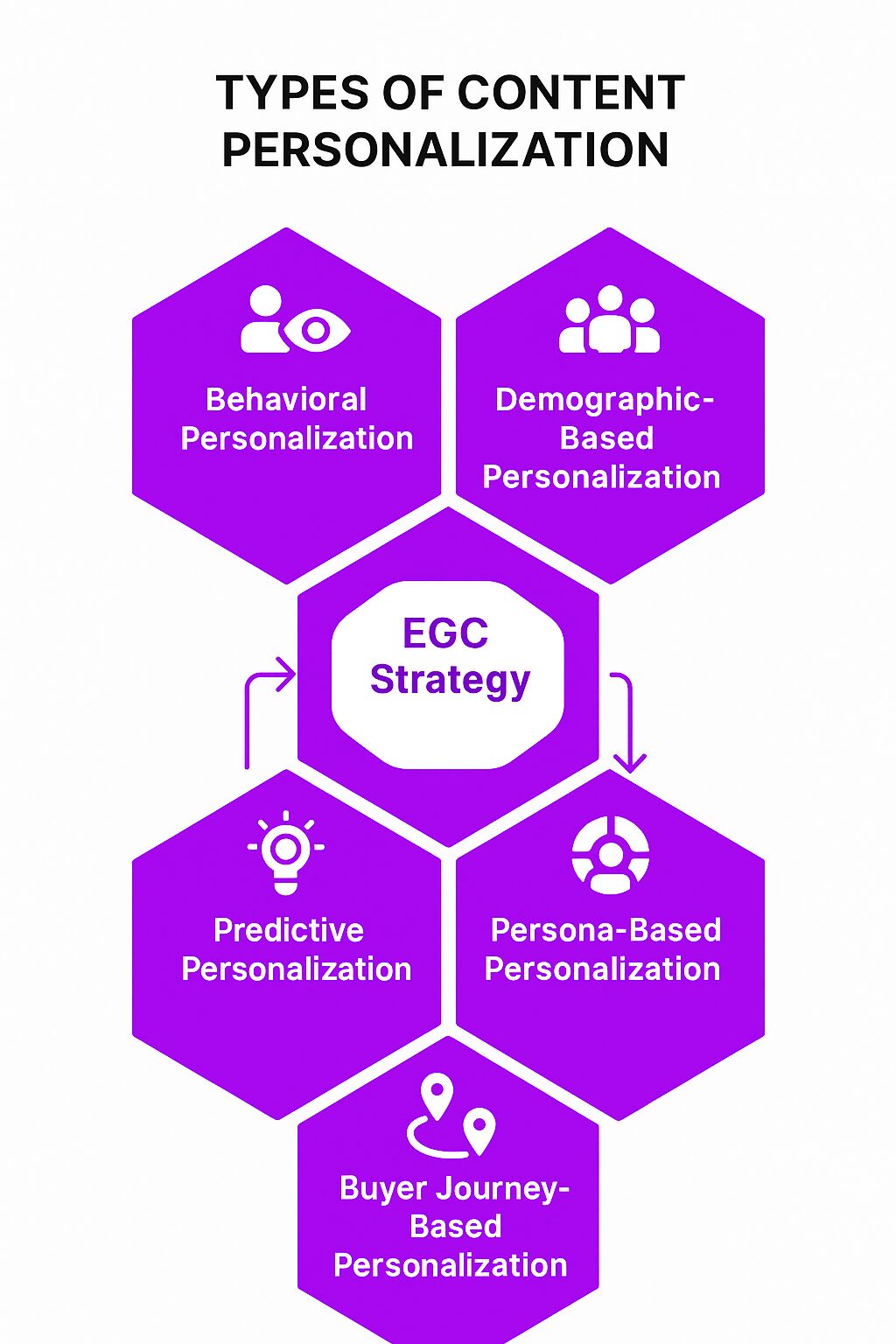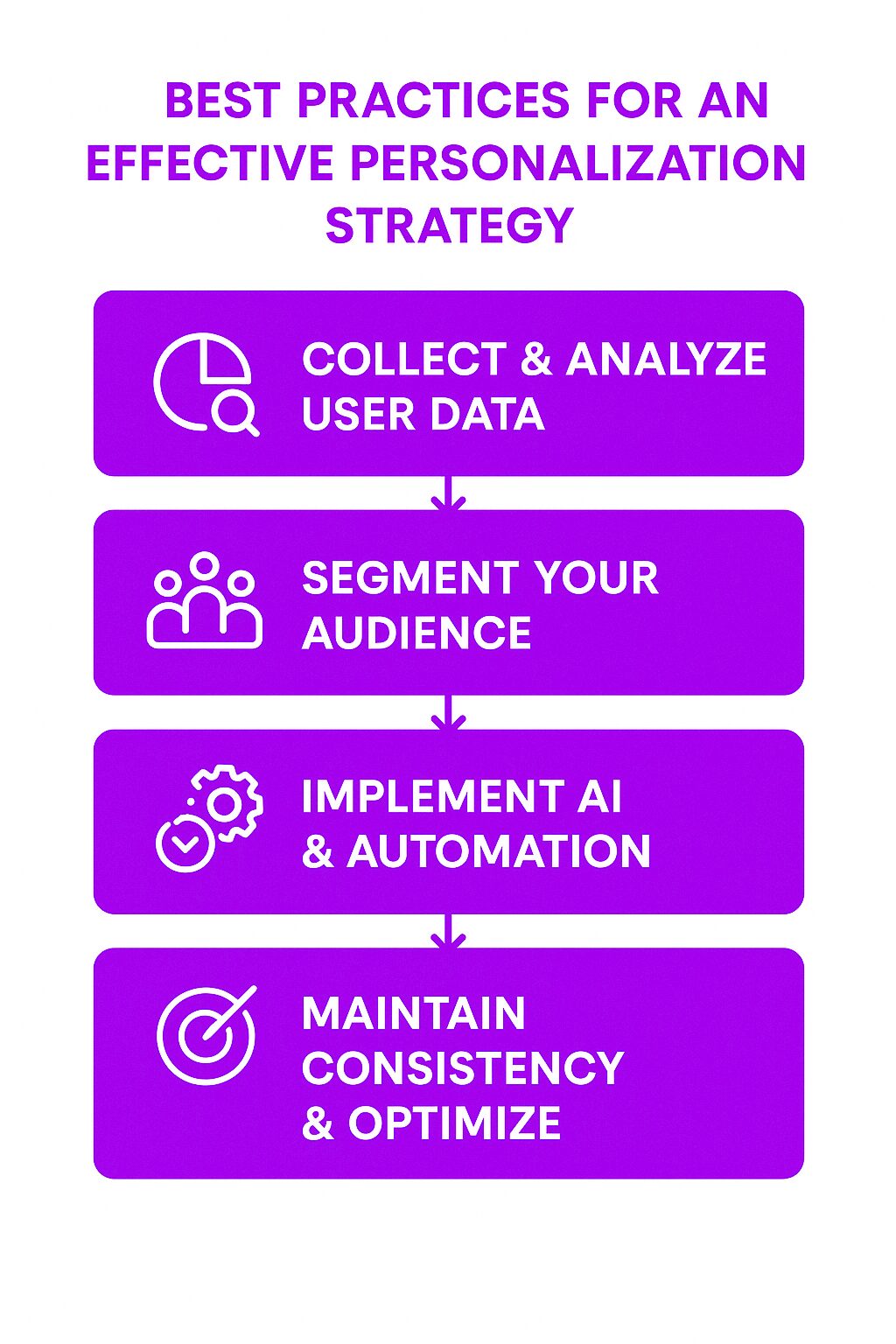What is Content Personalization?
Content personalization is the practice of delivering tailored digital experiences to users by targeting specific audience segments based on their behavior, preferences, demographics, or past interactions. By leveraging consumer data, businesses can better understand user preferences and behaviors, enabling them to create more relevant and engaging content. It enhances engagement by providing relevant content across websites, emails, apps, and other digital platforms using advanced content personalization tools.
Why is Content Personalization Important?
-
Increases User Engagement – Delivers content that aligns with individual interests.
-
Enhances Customer Experience – Creates seamless and relevant interactions.
-
Boosts Conversion Rates – Provides targeted messaging that drives actions.
-
Leverages Data for Tailored Experiences – A content personalization strategy uses consumer data to create tailored experiences, enhancing customer engagement and satisfaction by ensuring that messaging aligns with individual interests and preferences. Customer data platforms (CDPs) play a crucial role in collecting and analyzing consumer data to enhance personalization across various platforms throughout the customer journey.
-
Strengthens Brand Loyalty – Builds long-term relationships through personalized experiences.
-
Enhances the Entire Customer Journey – Personalization tools enhance user experience at every stage of engagement with a brand, delivering relevant content based on consumer data throughout the customer journey.
-
Optimizes Marketing ROI – Ensures content reaches the right audience at the right time.
Benefits of Content Personalization
Content personalization offers numerous benefits for businesses, including increased customer engagement, improved customer loyalty, and enhanced customer lifetime value. By delivering personalized content, businesses can create a more enjoyable and engaging experience for their customers, leading to increased satisfaction and loyalty. By collecting precise data points, businesses can segment their audiences effectively and create customized content that resonates with specific groups. Additionally, personalized content can help businesses stand out from their competitors and build stronger relationships with their customers.
Improves Customer Experience and Loyalty
Content personalization plays a crucial role in enhancing customer experience and loyalty. By delivering relevant and tailored content, businesses can create a sense of connection with their customers, making them feel valued and understood. This, in turn, can lead to increased customer satisfaction, loyalty, and retention. Personalized content can also help businesses to build trust with their customers, which is essential for long-term relationships.
When customers receive personalized content, they are more likely to engage with the brand, share their experiences with others, and become loyal advocates. Personalization can also help businesses to identify and address customer pain points, providing solutions that meet their specific needs. By doing so, businesses can demonstrate their commitment to customer satisfaction, leading to increased loyalty and retention.
Moreover, personalized content can help businesses to create a sense of community, where customers feel connected to the brand and other customers. This can be achieved through social media, email marketing, and other digital channels. By creating a sense of community, businesses can foster customer loyalty, encouraging customers to return and make repeat purchases.
Drives Business Results
Content personalization is a key driver of business results, including increased conversions, sales, and revenue. By delivering personalized content, businesses can increase the relevance and effectiveness of their marketing efforts, leading to improved customer engagement and conversion rates.
Personalized content can also help businesses to reduce bounce rates, increase average order value, and improve customer lifetime value. By providing customers with relevant and tailored content, businesses can create a sense of urgency, encouraging customers to make a purchase or take a specific action.
Moreover, personalized content can help businesses to improve their return on investment (ROI) from marketing efforts. By targeting specific audience segments with personalized content, businesses can increase the efficiency and effectiveness of their marketing spend, leading to improved ROI.
Types of Content Personalization
1. Behavioral Personalization Using Behavioral Data
Customizes content based on user activity and past interactions.
Example: An e-commerce platform recommending products based on browsing history.
2. Demographic-Based Personalization Using Demographic Data
Tailors content based on demographic data such as age, sex, income, location, and job title, helping businesses understand their target audience better and create personalized content.
Example: A news website displaying region-specific headlines.
3. Contextual Personalization
Adapts content based on real-time factors like device type and location.
Example: A travel website offering hotel deals based on a user’s current city.
4. Predictive Personalization
Uses AI and machine learning as a personalization tool to anticipate user needs and suggest relevant content. Example: A streaming service curating playlists based on past listening habits.
The Role of Data in Content Personalization
Data plays a crucial role in content personalization, as it enables businesses to understand their customers’ characteristics, preferences, and user interactions. By collecting and analyzing customer data, businesses can create personalized content that resonates with their target audience.
Collecting and Analyzing Customer Data
Collecting and analyzing customer data is essential for creating personalized content. Businesses can collect data through various methods, including website analytics, social media, and customer feedback. This data can be analyzed to identify patterns and trends, which can be used to create personalized content.
Using Behavioral Data for Personalization
Behavioral data is a type of data that provides insights into how customers interact with a business’s website, social media, and other digital channels. By analyzing behavioral data, businesses can create personalized content that is tailored to their customers’ interests and preferences.
Creating Personalized Content
Personalizing content requires a deep understanding of the target audience and their needs to effectively personalize content. Businesses can use various content personalization methods, including demographic, persona-based, and buyer journey-based personalization.
Delivering Personalized Experiences
Delivering personalized experiences requires a deep understanding of customer behavior, preferences, and needs. Businesses must collect and analyze customer data to create personalized content that resonates with their target audience.
There are several ways to deliver personalized experiences, including:
-
Using customer data to create personalized content, such as product recommendations and offers
-
Leveraging behavioral data to deliver personalized content, such as abandoned cart reminders and personalized emails
-
Creating personalized landing pages and websites that cater to specific audience segments
-
Using personalization tools, such as recommendation engines and content management systems, to deliver personalized content
By delivering personalized experiences, businesses can create a sense of connection with their customers, leading to increased customer satisfaction, loyalty, and retention.
Best Practices for an Effective Personalization Strategy
Step 1: Collect & Analyze User Data
Leverage analytics, cookies, and CRM data to understand audience behavior.
Step 2: Segment Your Audience
Group users based on interests, behavior, and demographics for targeted content delivery.
Step 3: Implement AI & Automation to Create Personalized Content
Use machine learning and dynamic content personalization tools to enhance personalization strategies.
Step 4: Maintain Consistency Across Channels
Ensure personalized experiences are seamless across websites, emails, and mobile apps.
Step 5: Continuously Test & Optimize
Use A/B testing and performance metrics to refine content personalization efforts.
Evaluating and Improving Personalization Efforts
Evaluating and improving personalization efforts is crucial to ensuring the effectiveness of content personalization strategies. Businesses must continuously monitor and analyze customer data to identify areas for improvement and optimize their personalization efforts.
There are several ways to evaluate and improve personalization efforts, including:
-
Using analytics tools to track customer behavior and engagement
-
Conducting A/B testing to compare the effectiveness of different personalization strategies
-
Collecting customer feedback to identify areas for improvement
-
Using personalization tools to optimize and refine personalization efforts
By continuously evaluating and improving personalization efforts, businesses can ensure that their content personalization strategies are effective and aligned with customer needs and preferences.
Best Tools for Content Personalization
-
Adobe Target – AI-powered personalization and A/B testing.
-
HubSpot – Marketing automation and dynamic content personalization. It can also be used to create personalized landing pages tailored to individual user data, enhancing engagement and conversion rates.
-
Optimizely – Advanced experimentation and personalization platform.
Real-World Examples of Content Personalization
Frequently Asked Questions
How does content personalization differ from content customization?Personalization is automated and data-driven, while customization allows users to modify content based on their preferences.
Which industries benefit most from content personalization?E-commerce, media, finance, healthcare, and SaaS companies that rely on user engagement.
How do you measure the success of content personalization?By tracking engagement rates, conversion rates, and customer retention metrics.
How does content personalization help in engaging potential customers?Content personalization helps in engaging potential customers by creating tailored digital interactions that meet their specific needs and preferences. By offering personalized experiences on landing pages and other key webpages, businesses can enhance engagement and build stronger relationships with both current and prospective clients. This approach not only attracts potential customers but also helps in retaining them by providing relevant and meaningful content.
Final Thoughts
Content personalization enhances user engagement, improves conversion rates, and strengthens customer loyalty. By leveraging data, AI, and automation, businesses can deliver relevant and meaningful content experiences that drive long-term success.
Author: [Your Name]
[Include credentials or expertise in digital marketing and content strategy]
🔗 References & Further Reading:








